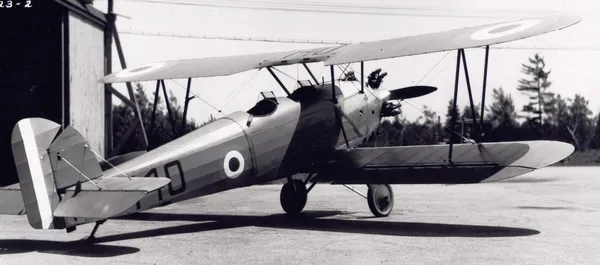Tomtit (Total: 16, Canadian: 2, Group 0)
Hawker Tomtit

Hawker Tomtit, RCAF (Serial No. 140)
The Hawker Tomtit is a British training biplane from the late 1920s. The Royal Air Force in 1927 required a replacement for their current elementary trainers, the elderly Avro 504Ns. The airframe, though not its covering, had to be metal. This led Sydney Camm, then chief designer at Hawker to design the Tomtit, a single bay biplane whose frame was of steel and duralumin tubes. The spars were made of tubular dumbbell sections, the whole aircraft fabric covered. Automatic slats of the Handley Page type were fitted to the leading edges of the upper wing. It had the standard fixed main wheel and tail-skid undercarriage of its day. The engine was uncowled.
Instructor and trainee sat in open tandem cockpits. The latter, at the rear, was provided with the then-new blind flying panel and a cockpit hood was fitted so blind flying instruction was possible. The RAF Tomtits had 150Â hp (112Â kW) Mongoose IIIC motors.
The Royal Canadian Air Force (maintained) 2 aircraft, at No. 7 Squadron RCAF and No. 12 Squadron RCAF. Wikipedia
Tomtit serial 139
s/n 139
c/n 41/426482
139
Known Units:
To Number 7 (GP) Squadron, later 12 (Comm) Squadron, both at Rockcliffe. In daily use as late as 1940. Later became Instructional Airframe A 130.last update: 2025-November-19
1941-April-14 Classified Instructional A 130 2020-06-09
1943-July-24 Struck off Strength 2019-08-20
Tomtit serial 140
s/n 140
c/n 41/426483
140
Known Units:
With the Test and Devlopment Flight at RCAF Station Rockcliffe, Ontario in September 1939. To Number 7 (GP) Squadron, later 12 (Comm) Squadron, both at Rockcliffe. Later became Instructional airframe A 131.last update: 2025-November-19
1941-April-14 Classified Instructional A 131 2020-06-09
1943-May-12 Struck off Strength 2019-08-20